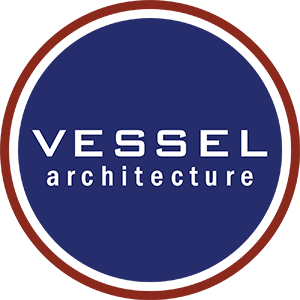Can a VR-Enabled AEC Firm Transform your Project?
Take a moment to picture yourself entering your new building for the first time. The space, volume, and structure. You can almost feel the finishes and explore the geometry as you move through the space. Trusting that architecture and engineering have fulfilled the project goals and knowing the design team has realized your idea is a thrilling moment.
In reality, work has yet to begin. But with the aid of Virtual Reality (VR) and three-dimensional visualization technologies, designers, consultants, and their clients can envision a place as though the project were in a later stage.
This innovation in technology has greatly impacted the AEC (Architecture, Engineering, & Construction) industries. What once had to be drawn by hand is now transformed into a 3D model; helping the design team streamline the process, but not changing the deliverable to the client. The incorporation of Virtual Reality into the design process has given the design team a tool to immerse the client into their space. Bringing VR into Architecture has been more impactful to the client than the switch from hand drafting to Building Information Modeling (BIM).
How does VR create clear expectations?
Architects are trained to interpret 2D drawings and imagine designs in our heads. Most clients don’t have that ability. But firms like Vessel are innovating new Virtual Reality workflows that allow the Owner to capture the full value of BIM. Now, we can allow the Owner to be a fully empowered participant in the design process, eliminating the need for interpretation as they are fully immersed in the architecture. This immersion has been the most impactful design communication tool architecture has ever seen. Virtual Reality streamlines design decisions and comprehension. Our clients who participate in our Virtual Reality sessions never say, “I didn’t know it was going to look like this.” They know EXACTLY how their design will look and feel.
How can VR benefit engineering and construction coordination?
Moving above and beyond the standard client benefits of Virtual Reality, the industry is seeing an increased advantage in construction coordination and administration. Our ability as professionals to fine-tune building systems and design details in 3D allows for a more cohesive building design and reduces possible drawing conflicts that may cause confusion or cost increases in the field.
The advances in modeling by MEPS (mechanical, electrical, plumbing, structural) engineers provide a realistic look into problems that may occur during construction. Using internal VR walk-throughs, we aim to uncover places where the contractor may have questions. Modern BIM tools allow us to use the same model to produce a full set of construction drawings and have a Virtual Reality experience. If an error is visible in the VR walk-through, it is also wrong in the drawings and should be clarified to avoid questions during construction. The early detection of these questions can mitigate losses in time and potentially complicated and costly solutions in the field.
The 3D coordination process begins with linking all available engineering consultant models into the architectural model. This comprehensive model is the foundation used in our internal walk-throughs, allowing us to view every room in a nearly as-built state. The VR headset allows us to compile virtual redlines in real-time using tools such as screenshots and built-in comment systems. In this way, we catch conflicts such as ductwork or structure located below the ceiling, light fixtures that are out of place, and exit signs that are not visible.
How does VR help with finishes and final decisions?
Part of the immersion magic of VR technology is experiencing how it “feels” to use a space. Inviting the interior design, lighting, and art consultants to the project allows for an even more immersive experience and more rapid decision-making. What do the finishes look like, and how will the furniture and art be placed? Is there enough ambient lighting, and how do the windows and sunlight move with the day? With VR, you can see and experience the interior space as if you were there. Don’t like a finish? These can often be changed in real time and experience the outcomes as you work, as well as experiment with ideas and observe their effects right away. Utilizing Virtual Reality to collaborate with all parties involved ensures everyone is on the same page and final decisions are based on a shared understanding of the design and vision for the project.
Vessel performs Virtual Reality walk-throughs internally, with consultants, and with clients at crucial milestones throughout the project. Although the relevance and functionality of a VR experience evolves throughout the life of a project, there is no phase at which it is not beneficial.
